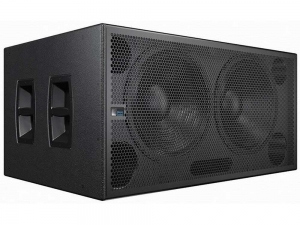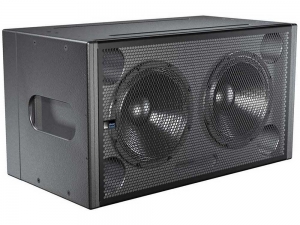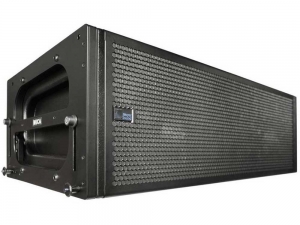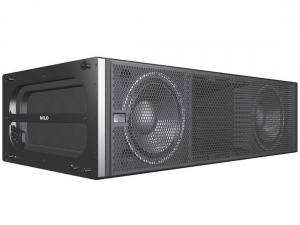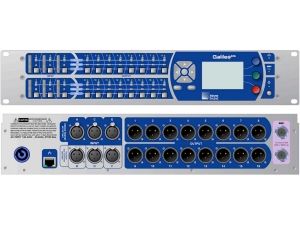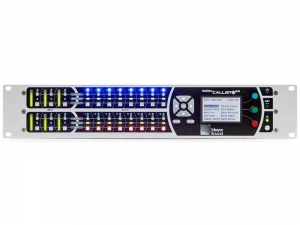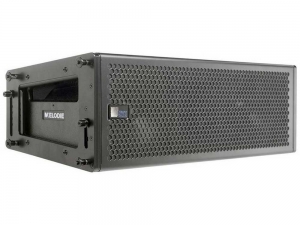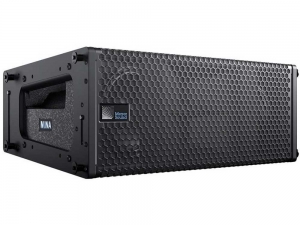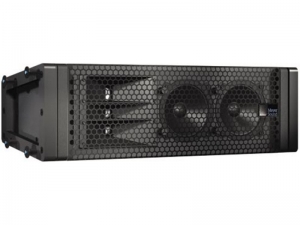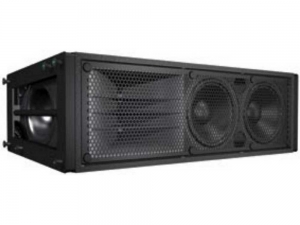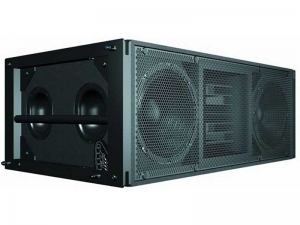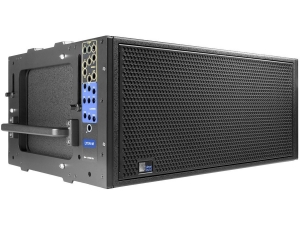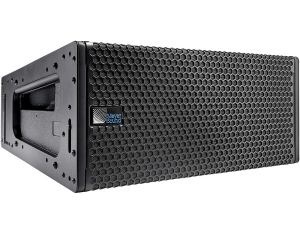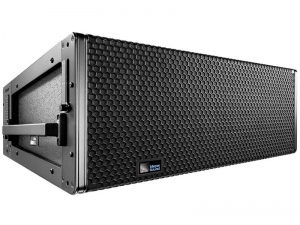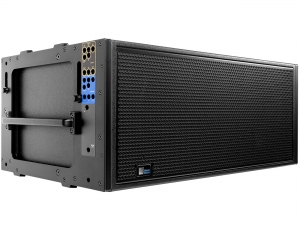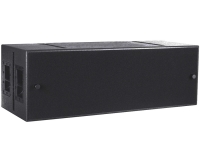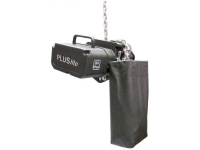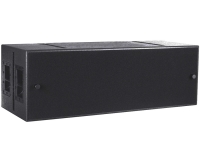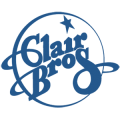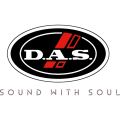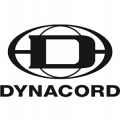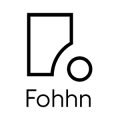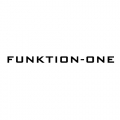ABOUT THE PRODUCT
ABOUT THE MANUFACTURER
GLOSSARY
MILO : High-Power Curvilinear Array Loudspeaker
MILO is a self-powered, four-way loudspeaker designed for vertical curvilinear arraying. It has ample power reserves (140 dB SPL peak output at 1 meter) for high output level, longer throw applications in large venues, yet its weight and cabinet dimensions allow for its use in more compact spaces.
MILO was designed to easily integrate with other Meyer Sound loudspeakers, particularly the M3D line array, M3D-Sub directional subwoofer, M2D compact curvilinear array and the CQ-2 full-range narrow coverage loudspeaker. Though substantially smaller than the M3D/M3D-Sub in height and depth, MILO shares the same width for seamless integration. When MILO arrays also include M3D-Subs, the combination exhibits dramaticly attenuated off-axis low-frequency response. This allows system designers to configure arrays that effectively steer bass energy away from areas located behind the arrays, such as the stage and monitor mix position, where minimum levels are desired.
The MILO low/low-mid section comprises two neodymium magnet 12-inch cone drivers with 4-inch voice coils. These drivers function in a two-way arrangement, with both drivers active below 300 Hz for maximum low frequency impact. Above 300 Hz, an integral crossover rolls off one driver to maintain optimal polar and frequency response.
The mid-high section uses a 4-inch diaphragm (1.5-inch exit) compression driver coupled to a 90° constant directivity horn through Meyer Sound’s REM ribbon emulation manifold (patent pending). REM produces a wave front similar to that of a ribbon driver, but allows the far higher output generated by a compression driver. A dedicated very-high frequency section, with extended range to 18 kHz, employs three 2-inch diaphragm (0.75-inch exit) compression drivers coupled via a second REM to a 90° horn.
All MILO transducers are designed and manufactured in-house by Meyer Sound, and are driven by an on-board, four-channel class AB/H amplifier that provides more than 3935 watts of total output power. The integrated amplifier/processing circuitry includes TruPower* limiting to protect the drivers and hold long-term power compression to less than 1 dB. The field-replaceable electronics module incorporates Meyer Sound’s Intelligent AC power supply, which automatically adjusts for any line voltage worldwide and provides both soft turn-on and transient protection.
Meyer Sound’s RMS monitoring system interface is fitted as standard on MILO. RMS allows engineers to monitor and troubleshoot all key operating parameters on each MILO – as well as any other RMS-equipped Meyer Sound cabinets – from a remote Windows-based computer.
MILO systems may be deployed in either flown or ground-stacked configurations. Captive QuickFly rigging hardware uses rigid AlignaLinks for coupling the units, and allows nine splay angles between 0° and 5°. The rigid connections make for easy adjustment of array tilt, and often eliminate the need for a pullback strap in flown configurations. An optional MG-3D/M multipurpose grid accommodates a variety of flown or stacked configurations, including multipoint support and bridles. A single flown array can include up to 24 MILO loudspeakers, or the equivalent weight of MILOs, M3Ds, M3D-Subs, M2Ds, CQ-2s and rigging hardware. Stacking no more than six cabinets is advised.
With its unique combination of high power and compact size, MILO can serve as the key component in scalable, building block systems comprising any or all M Series products and certain other Meyer Sound models. MILO can be combined with the M3D for very large venue applications, or transition to M2D or CQ-2 loudspeakers for near field coverage where appropriate.
A weather-protected version with a folding rain hood that safeguards the electronics is optionally available.
*TruPower limiting protects loudspeaker components without compromising performance. TruPower monitors real-time power consumption, incorporating the impedance of the transducer into its calculation. The result is an accurate estimation of voice coil temperature, affording greater long-term protection, while eliminating excess compression.
Features & Benefits
- Extremely high power-to-size ratio for lower costs and flexible installation
- Exceptional fidelity and peak capability assure clean, high-impact response
- Seamless integration with other M Series models
- QuickFly rigging system simplifies use in flown or ground-stacked arrays
Applications
- Stadiums, arenas, concert halls and theatres
- Touring sound reinforcement
- Large-scale events
Professional used lighting equipment.| Professional second hand lighting equipment.| Professional pre owned lighting equipment.
Professional used audio equipment.| Professional second hand audio equipment.| Professional pre owned audio equipment.
Second hand audio gear. | Second hand lighting.
Pro audio equipment, second hand amplifiers, DJ, second hand sound systems, second hand Microphones, second hand Media Players.
Outdoor & Indoor LED screens for sale, LED mobile truck.
Light trussing, Gebrauchte Veranstaltungstechnik, used stage equipment Stage & Theatre lighting products.
Used Meyer Sound Laboratories
Meyer Sound Laboratories is an American company based in Berkeley, California that manufactures self-powered loudspeakers, multichannel audio show control systems, electroacoustic architecture, and audio analysis tools for the professional sound reinforcement, fixed installation, and sound recording industries.
The company’s emphasis on research and measurement has resulted in the issuance of dozens of patents, including for the now-standard trapezoidal loudspeaker cabinet shape. Meyer Sound has pioneered other technologies that have become standard in the audio industry, including: processor-controlled loudspeaker systems, self-powered loudspeakers,curvilinear arraying, cardioid subwoofers, and source independent measurement.
Meyer Sound has consistently involved itself with advanced research beyond that connected to immediate product development, sometimes in conjunction with arms of the University of California, Berkeley. Some of this research has resulted in unusual products such as their parabolic sound beam and sound field synthesis loudspeakers. Other projects, such as the spherical loudspeaker research underway by Meyer Sound and CNMAT (Center for New Music and Audio Technologies) at UC Berkeley are still in the stage of pure research.
Professional used lighting equipment.| Professional second hand lighting equipment.| Professional pre owned lighting equipment.
Professional used audio equipment.| Professional second hand audio equipment.| Professional pre owned audio equipment.
Second hand audio gear. | Second hand lighting.
Pro audio equipment, second hand amplifiers, DJ, second hand sound systems, second hand Microphones, second hand Media Players.
Outdoor & Indoor LED screens for sale, LED mobile truck.
Light trussing, Gebrauchte Veranstaltungstechnik, used stage equipment Stage & Theatre lighting products.
Octave: The difference between two frequencies where one is twice the other. For example, 200 Hz is an octave higher than 100 Hz. 400 Hz is one octave higher than 200 Hz.
Optical Digital Cable: Fiber optic cable that transfers digital audio signals as light pulses.
Outcue/Outq/Out-Point: These words all refer to the final few seconds of audio signifying the conclusion of the production.
Package: A completed and fully edited audio piece.
Passive: Not active. A passive crossover uses no external power and results in insertion loss. A passive speaker is one without internal amplification.
Phase: Time relationship between signals it’s all relative.
Power Output: A measure, usually in watts, of how much energy is modulated by a component.
Preamplifier: A control and switching component that may include equalization functions. The preamp comes in the signal chain before the amplifiers.
Pre Outs: Connectors that provide a line-level output of the internal preamp or surround processor.
Pre Outs/Main Ins: Connectors on a receiver that provide an interruptible signal loop between the output of the internal preamp or surround processor portion of the receiver and the input of the amplifier portion of the receiver.
Pre/Pro: A combination preamp and surround processor.
Processors: Anything that processes an incoming signal in some way. Surround processors, for example, can decode a Dolby Digital signal to send to an amp so you can hear it.
Pulse Code Modulation: (PCM) a way to convert sound or analog information to binary information (0s and 1s) by taking samples of the sound and record the resulting number as binary information. Used on all CDs, DVD-Audio, and just about every other digital audio format. It can sometimes be found on DVD-Video.
Q-and-A: Question and answer session.
Receiver: Any component that receives, or tunes, broadcast signals, be it NTSC, HDTV, DBS, or AM/FM radio. Typically refers to the single component that includes a preamp, surround processor, multichannel amplifier, and AM/FM tuner.
Reverberation: The reflections of sound within a closed space.
RF: Radio Frequency. Television signals are modulated onto RF signals and are then demodulated by your television’s tuner. VCRs and DBS receivers often include channel 3 or 4 modulators, allowing the output signal to be tuned by the television on those channels. Also, laser discs used an RF signal for modulating Dolby Digital 5.1 soundtracks on some movies. This requires an RF demodulator (usually referred to as an AC3-RF demodulator) before or in the surround processor to decode the signal.
RMS: Root Mean Square or the square root of the arithmetic mean (average) of the square’s set of values. A reasonably accurate method of describing an amplifier`s power output.
SACD: Super Audio CD. Enhanced audio format with up to six channels of high-resolution audio encoded using DSD. Requires an SACD player. Multichannel also requires a controller with six-channel analog or proprietary digital inputs for full playback.
Sampling Frequency: How often a digital sample is taken of an analog wave. The more samples taken, the more accurate the recording will be. You need to sample at a minimum of twice the highest frequency you want to capture. For example, the 44.1-kilohertz sampling rate of a CD cannot record sounds higher than 22.05 kilohertz.
Scener: A radio report in which the announcer is recorded at the same time and place as the background sound of an event.
Sensitivity: A measurement (in dB) of the sound-pressure level over a specified frequency range created by a speaker driven by 1 watt (2.83V at 8 ohms) of power with a microphone placed 1 meter away.
Signal-to-Noise Ratio: A comparison of the signal level relative to the noise level. Larger numbers are better.
Simultaneous Interpretation: This system allows attendees to hear the meeting in their own language.
Sound Bite: A portion of audio of someone speaking.
Sound field: The total acoustical characteristics of a space, such as ambience number, timing, and relative level of reflections ratio of direct to reflected sound RT-60 time etc.
Soundstage: The area between two speakers that appears to the listener to be occupied by sonic images. Like a real stage, a soundstage should have width, depth, and height.
Speaker: A component that converts electrical energy into acoustical energy.
SPL: Sound-Pressure Level. Measured in dB.
Subwoofer: A speaker designed to reproduce very low bass frequencies, usually those below about 80 Hz.
THX: Certification program for home theater equipment. Uses some proprietary features, but mostly assures a base quality level for a given room size. (See THX select or Ultra.) Is compatible with any and all soundtrack formats. Stands for either Tom Holman’s eXperiment, after the engineer who drafted the original standard, or is named after the company’s founder George Lucas first movie, THX 1138. Nobody agrees on which.
THX select: Certification program for speakers and receivers that assures a base level of quality and performance when played in a room that’s between 2,000 and 3,000 cubic feet.
User-Generated Content (UGC): Text, photos, video or audio supplied by the customers of a company.
Voicer: A radio report without background audio taken from a scene or otherwise.
Wrap: A radio report containing both the reporter and an actuality.
Professional used lighting equipment.| Professional second hand lighting equipment.| Professional pre owned lighting equipment.
Professional used audio equipment.| Professional second hand audio equipment.| Professional pre owned audio equipment.
Second hand audio gear. | Second hand lighting.
Pro audio equipment, second hand amplifiers, DJ, second hand sound systems, second hand Microphones, second hand Media Players.
Outdoor & Indoor LED screens for sale, LED mobile truck.
Light trussing, Gebrauchte Veranstaltungstechnik, used stage equipment Stage & Theatre lighting products.

